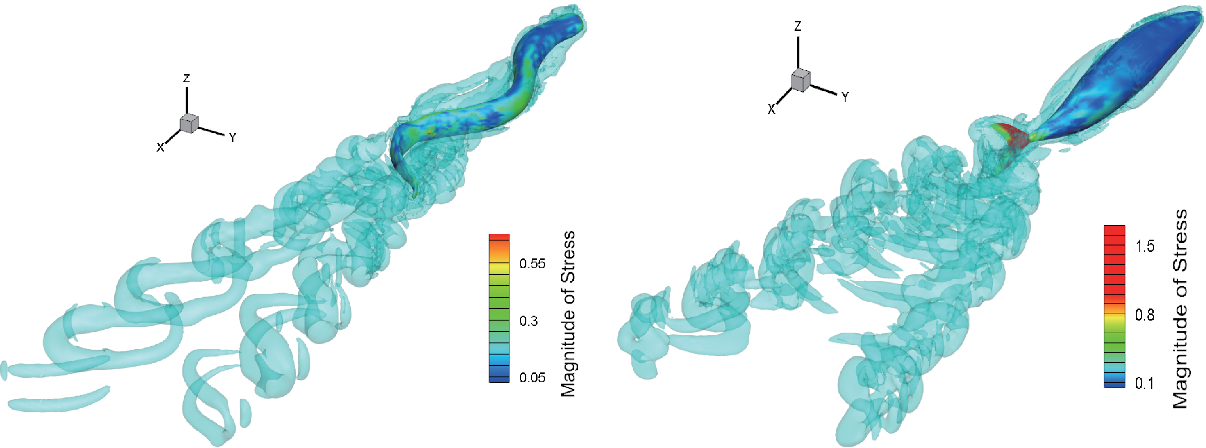In the undulatory swimming of fish, a backward-traveling wave of body bending is formed to push against the water and generate propulsion. How the thrust is generated has attracted interdisciplinary research in the past few decades, and considerable progress has been made in understanding the propulsion hydrodynamics. Assuming that the force on the body of the swimmer is dominated by the drag and that forces are independently generated by the segments, Taylor developed the resistive force theory (RFT) [1]. In the classic elongated body theory (EBT) by Lighthill, the inertia of the surrounding fluid of the body is considered the key effect for propulsion, and the predominant forces on the body are reactive forces, which are required to accelerate/decelerate the water [2]. However, which theory can better describe fish swimming is still unclear.

Internally, the swimming of fish is powered by muscles; therefore, how muscles are used is a key question in understanding fish swimming. Electromyography (EMG) measurements on the muscle of fish during swimming provide spatiotemporal patterns of muscle activation in swimming fish of various species [3]. During steady swimming, a common pattern emerges: the muscle elements are activated in the manner of a wave traveling posteriorly, but this EMG wave travels faster than the curvature wave. Nonetheless, details of the muscle activation pattern vary among species. For carangiform swimmers such as carp, the propagation speed of EMG onset is much higher than that of the bending wave, whereas that of EMG termination is even higher, resulting in a posteriorly shortening period. Such shortening is still a mystery.
A recent study [4] by Tingyu Ming, Bowen Jin, Jialei Song and Yang Ding from CSRC, and Haoxiang Luo from Vanderbilt University, and Ruxu Du from Chinese University of Hong Kong, used 3D CFD simulations to investigate the force distribution for a typical anguilliform swimmer (eel) and a typical carangiform swimmer (mackerel) and to evaluate the theoretical models. They show forces on the bodies of both the anguilliform swimmer and the carangiform swimmer are dominated by reactive forces, which can be roughly estimated using the elongated body theory (EBT). However, the force on the caudal fin of the carangiform swimmer is dominated by drag-like forces that cannot be quantitatively predicted by EBT, RFT, or their combination. Furthermore, they showed that the torque exhibits wave patterns that match the overall EMG patterns of real eel and mackerel. The power output for the anguilliform swimmer is concentrated on the anterior half of the body and is significantly negative on the posterior side of the body. In contrast, for the carangiform swimmer, most of the power is generated by the posterior part of the body before the peduncle. The results explain the differences in the observed electromyography patterns in fish with different swimming modes and show that the tendon can save energy in carangiform swimmers by connecting muscles that do work with opposite sign in certain periods.
References:
[1] G. Taylor, Proceedings of the Royal Society of London 214, 158 (1952).
[2] M. Lighthill, Journal of Fluid Mechanics 44, 265 (1970).
[3] C. Wardle, J. Videler, and J. Altringham, Journal of Experimental Biology 198, 1629 (1995).
[4] Ming T, Jin B, Song J, Luo H, Du R, Ding Y (2019) 3D computational models explain muscle activation patterns and energetic functions of internal structures in fish swimming. PLoS Comput Biol 15(9): e1006883. https://doi.org/10.1371/journal.pcbi.1006883 & https://arxiv.org/abs/1812.02410



